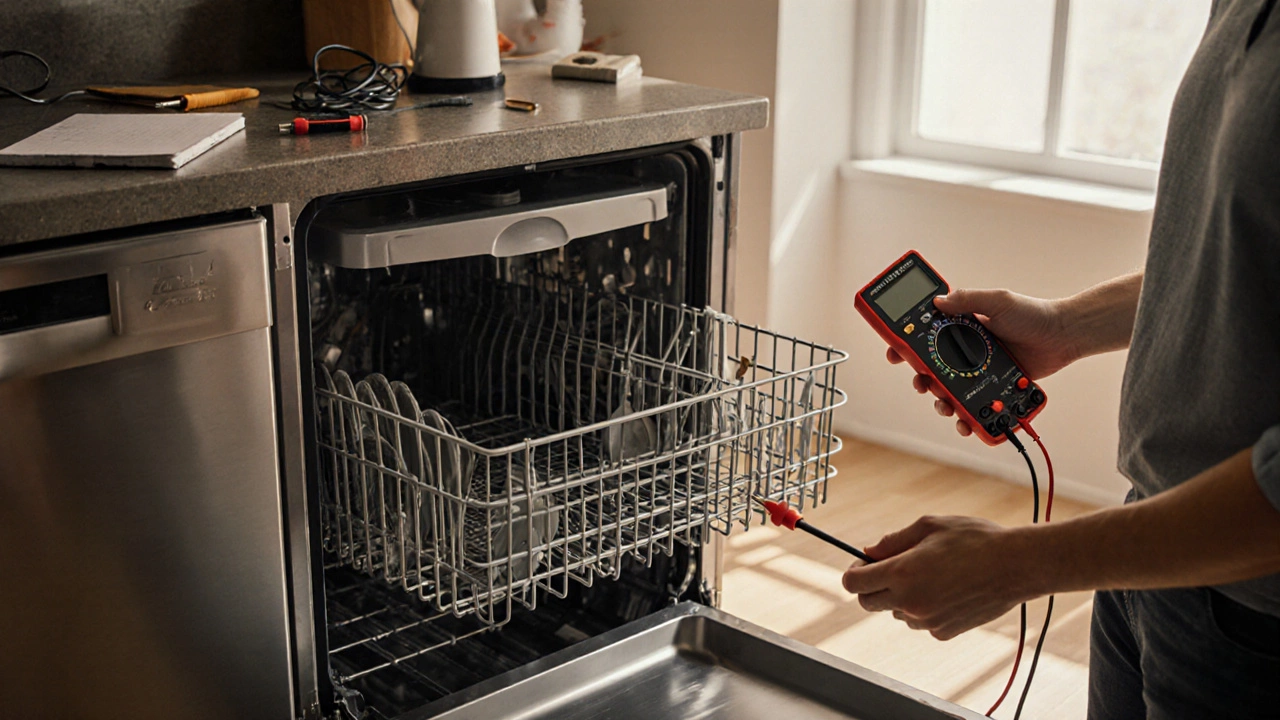Learn how to pinpoint dishwasher issues step by step, from power checks to error‑code decoding, so you can fix common problems before calling a technician.
Dishwasher Not Cleaning – What’s Going Wrong?
When your dishwasher not cleaning, the situation where plates, glasses and utensils still look dirty after a wash cycle, it usually points to something inside the machine that’s not doing its job properly. Most homeowners assume the problem is the detergent, but the real issue is often a mechanical part or water condition that prevents the cleaning action from working as designed.
The spray arm, the rotating nozzle that forces water onto every surface of the load is a frequent offender. If the arm is clogged with food particles, mineral buildup, or simply warped, the water jets lose pressure and miss critical spots. Even a slight misalignment can cause the arm to wobble, reducing coverage and leaving residue on dishes. A quick visual check—remove the arm, rinse it under running water, and spin it by hand—will reveal if it’s free to move and clear of debris.
Another hidden culprit is the filter, the mesh screen that catches food bits before they re‑circulate. Over time, the filter can become packed with grime, making it harder for water to flow through the system. A clogged filter not only slows down the pump but also forces dirty water back onto the dishes. Cleaning the filter is as easy as unscrewing it, rinsing it under warm water, and giving it a gentle brush. Doing this every month can keep the water stream strong and consistent.
Even with a clean spray arm and filter, the right detergent, the cleaning agent formulated for high‑temperature, low‑foam action is essential. Using a powder meant for hand‑washing or an outdated tablet can leave film on glassware. Pair the correct detergent with the proper amount of water softener if you live in an area with hard water, water that contains high levels of calcium and magnesium. Hard water reduces the effectiveness of detergents and can cause limescale on heating elements, further diminishing cleaning power. Adding a rinse aid or a water‑softening additive helps the detergent work and prevents spotting.
Quick Checks Before You Call a Pro
Beyond the arm, filter, detergent and water hardness, there are a few other low‑effort checks that can save you a service call. Verify that the door latch clicks securely; a loose seal lets hot water escape and reduces temperature. Make sure the heating element is heating to at least 130 °F (55 °C) – most dishes need that heat to break down greasy films. Finally, inspect the pump for blockages; a jammed pump will struggle to circulate water, leaving dishes half‑clean. If all these items check out and you still see residue, it may be time to have a technician examine the electronic control board or replace worn seals.
Armed with these basics, you can diagnose most “dishwasher not cleaning” scenarios without guessing. The articles below dive deeper into each component, offer step‑by‑step repair guides, and explain when professional help is the safest route. Browse the collection to find the exact fix that matches your dishwasher’s make and model.

